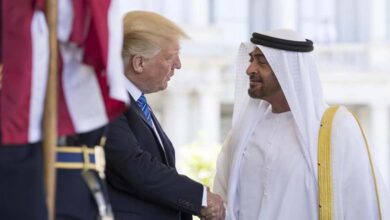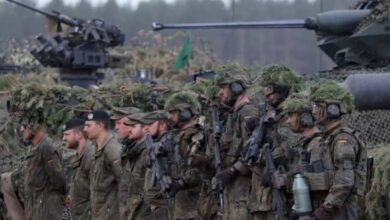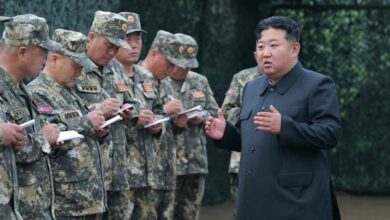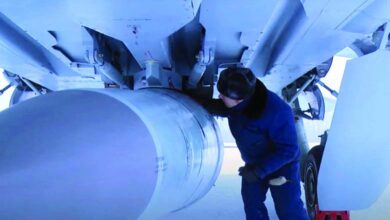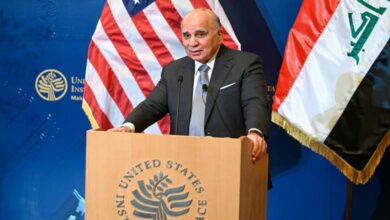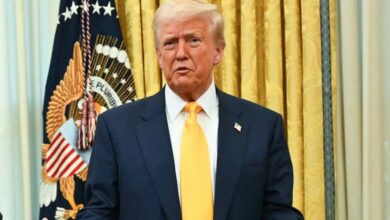Washington’s silence confuses allies: Is the U.S. pulling out of Europe?
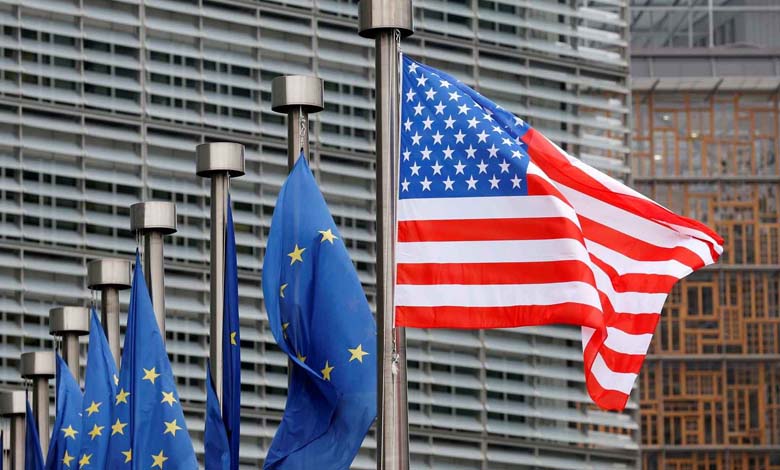
The key question regarding the future of American troops in Europe went unanswered at the recent NATO summit held in The Hague.
According to Newsweek magazine, discussions about a potential reduction or withdrawal of U.S. forces from the continent — a matter only the American delegation could address — were not held with any of the other attendees.
-
One Trillion Dollars: The Cost for Europe to Break Free from Washington’s Hammer
-
New European Sanctions Await Russia… France Seeks U.S. Coordination
The United States has signaled a strong interest in redirecting its military resources toward the Indo-Pacific region while also managing the fallout from recent strikes on Iran over the weekend. Still, the timeline and scale of any drawdown remain unclear.
U.S. Ambassador to NATO Matthew Whitaker stated that “nothing has been officially decided” regarding troop withdrawals, adding that “serious discussions” would take place after the summit, stressing the need to assess the “practical consequences” of any move.
-
An American Historical Solution for the Ukraine Crisis: The Post-War Berlin Model
-
“Military Service”: Europe’s Concerns Drive towards “Mandatory” Service
A European defense official confirmed to Newsweek that neither President Donald Trump nor the Secretary of Defense mentioned the future of U.S. troops in Europe during the summit’s formal meetings. A second official described this “intentional silence” as a unilateral American decision, despite Europe’s keen interest in the issue.
The potential redeployment of tens of thousands of U.S. troops has deeply alarmed European allies, who have relied for decades on this presence as both a security guarantee and a symbol of American commitment to countering threats — especially from Russia.
-
Europe’s Decisive Test: 10 Steps to Navigate without the American Captain
-
After America: Is it Time to Transform NATO into a European Organization?
Major American bases spread across Europe provide some of NATO’s most critical military capabilities. These bases are currently undergoing a comprehensive review by the Pentagon, with conclusions expected by this fall.
Although Whitaker assured before the summit that Washington would work with its allies to ensure “no security gaps,” any withdrawal would be highly complex and extremely costly. The International Institute for Strategic Studies estimates that replacing U.S. capabilities could cost Europe up to $1 trillion over the next 25 years, while the U.S. itself has not yet determined an alternative deployment location for these troops.
-
World War Preparations? Europe’s Weapons Stuck on the Rails
-
Immigration Protests – Will Congress Step In to Restrain Trump?
Despite the lingering uncertainty, the summit proved satisfactory for Trump, who softened his usual criticisms of allies for under-spending on defense. After previously alarming remarks regarding Russia and so-called NATO “freeloaders,” Trump expressed full support for the Alliance during the summit.
This partial reconciliation was reflected in NATO leaders signing an ambitious pledge to raise collective defense spending to 5% of GDP over the next decade.
-
The West and Peace in Ukraine: Conditions to Bridge the Gap Between Ground Realities and Negotiations
-
Drone Revolution: The Ukraine War Reshapes U.S. Military Priorities
The agreement allocates 3.5% to direct military spending (“hard defense”) and 1.5% to vital defense infrastructure such as cyber capabilities and strategic bridge reinforcement. Just months ago, this U.S.-driven objective seemed unrealistic, even as Europeans admitted past shortcomings.
Still, divisions remain. Spain, for instance, claimed it could meet the goals without reaching the 3.5% direct defense threshold, drawing criticism. Trump called Spain’s position “terrible” and “unfortunate,” echoing Dutch Prime Minister Mark Rutte’s doubts over Madrid’s ability to meet NATO targets without increasing spending.
This controversy highlights the ongoing divide within the Alliance, as Eastern European countries near Russia ramp up their military budgets, while Western and Southern European nations lag behind.


